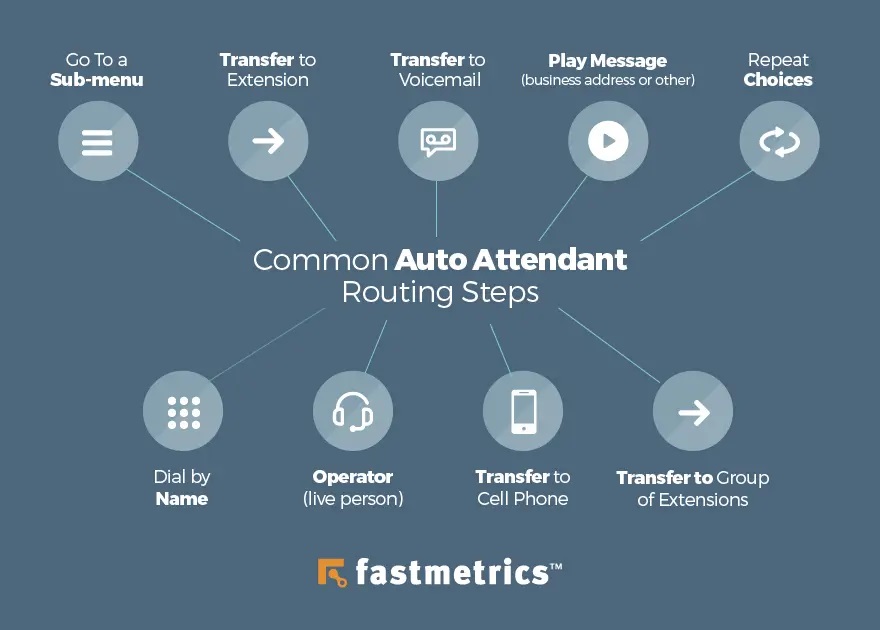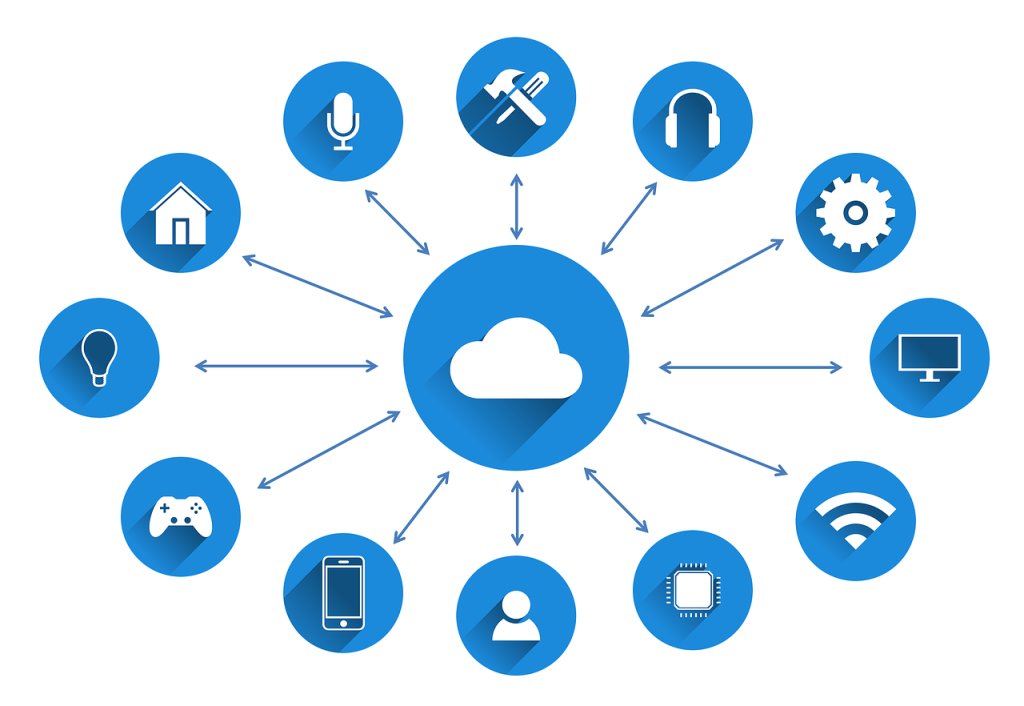Best Phone Automation Tips For Business Efficiency
Phone automation has become extremely popular for businesses in many sectors. While the helpfulness of this technology is well established for serving customers, some disregard the potential it has for outbound sales. Phone automation, together with other sales tools, may help your sales team find new businesses, communicate more efficiently with prospects and boost conversion rates.
Here are some of the most effective phone automation techniques to consider to increase business sales:
1. Using A Call Menu To Give Callers Options
Call menus or an auto attendant are a useful tool for phone automation. If your business hasn’t utilized this kind of technology, you’re missing out on one of the best ways to route and manage your phone calls efficiently. There’s a common misconception that it only works for bigger businesses that have large call volumes. No business is too small to utilize a call menu.

An automated call menu can make you sound more professional when clients are making inbound calls. Today, most people tend to work with businesses or companies that respond efficiently and professionally. The menu greets callers, allows them to choose an option to hear important information, and directs them to the department or person they need.
2. Make A Business Directory
Creating a business directory allows you to instantly direct callers in a more professional way, to the correct person. With the help of a business directory, there’s no need for your customers to speak to a receptionist, before being directed to the right person. When someone makes a call, they can dial the extension that links to the right department or person without speaking to a live call agent. Callers can hear the extension corresponding with the department or person they need. From then on, callers can dial that extension directly anytime. This is helpful and effective for callers, especially when you have a small number of employees.
3. Invest In Auto-Dialer
Today, you’ll be able to see a lot of auto-dialers in the market as phone automation is becoming more and more relevant to businesses. If you want to use this option to make mass cold calls, you may want to invest in an app such as Call Cowboy Autodialer. By growing call volumes exponentially, employees can reach more targets. Whether you’re conducting B2C advertising activities or B2B sales campaigns on a regular basis, these apps can allow you to maximize productivity and efficiency.

Also, if you want to use your existing phone, but want to keep your personal and business life separate, an auto-dialer app can make that possible. Boost caller productivity by automating cold calls from your telephone list, all while protecting personal numbers. Apps like these can take care of outbound calls, boost productivity and help you to look like a big business. You can also receive inbound calls, send SMS, and make custom notes on sales leads. Apps like Call Cowboy offer a predictive dialer. This can automatically dial several numbers simultaneously from a call list. Agents are then only get connected to a live answer.
4. Scheduled Forwarding
This phone automation technique is beneficial if you want your business to organize a custom schedule for managing inbound calls. This call time frame feature can be limited to certain virtual phone services. This feature enables call forwarding schedules by a user or extension basis, to ensure the right people are on a call schedule at the right time. This is great for automating shift alterations in your business and accommodating different employees who are working different days. The moment the forwarding schedules are set for a phone or device, this phone will only ring during the time frames scheduled.
5. Email Notifications For Incoming Messages
Email notification for your business messages is crucial because you may not always have free time to check your messages. And, in some cases, you happen to miss important messages that come through your phone. The main purpose of an email notification is for voicemails. You can set up your account to send a new voicemail message to a certain email address, choose any email address that you want aside from the account holder, and you’ll get notified once customers leave voicemails for you. This is a standard feature of the cloud based metricVOICE service from Fastmetrics.
You can also set up several mailboxes for employees. Then, set every mailbox to route to the email of the person. Aside from voicemail, you’ll also get alerted every time new text messages come in from customers if you’re only utilizing business text messaging. You can set one email address to get new message notifications or, set up several email addresses to ensure that someone in your business is sure to respond right away.
6. Set Business Hours
Setting business hours when utilizing a virtual phone system is important, especially if you want to ensure when phones should ring. For instance, if you set your business hours from 6 am to 6 pm, then calls only ring your forwarding phone during this period. This will guarantee that your forwarding phone won’t be ringing at night. When you notice that your business is receiving lots of calls after business hours, you may want to set afterhours audio messages and offer the option to leave voicemails.
7. Use A Call Recording System
Using a call recording system will benefit your marketing team, as they’ll know what customers think about the services or products you offer. By recording phone calls with customers, the communications and marketing teams can review these and determine the positive points from the customers and which areas need improvement. The marketing team can then think of innovative ways to address these issues in its campaigns. The team can watch out for keywords that customers are using to maximize the ads and publications. A recording system keeps an archive of recorded calls, which can be helpful in verifying client information.
It may not be necessary to incorporate such features into your phone system. However, at the very least, automating call management can make for a better experience for your caller or customer. A goal of phone automation is to enhance the experience of clients who are reaching out. As well as your experience when it comes to handling calls.
Why You Should Consider Phone Automation For Your Business
Most companies are constantly finding ways to improve their operating processes, whether these improve simplifying tasks, improve sales, or retain customers. Regardless of the areas you want to improve in your business operations, phone automation is an effective way to monitor communications and tasks in the company.
Phone automation is one innovation that businesses may consider. It can save you on labor and time and provide a better call experience. It’ll also help prevent lost sales probably due to frustrated or confused sellers. There are ways automation can help make your business operate better. Read on further.
When A Receptionist Isn’t Available, Someone Will Cover The Phone
If your business only has one person to answer all incoming voice calls, what will happen when they’re out on a break, on vacation, or sick? You can hire a temporary worker or train other employees to do the job temporarily. If you consider phone automation, you’ll be able to cover the phone even though the employee isn’t around. It’s also helpful for answering incoming calls when your business is closed over the weekend or at night.
Save On Labor Expenses
Another good reason to automate your phone system is to save on your fixed labor expenses. Is call volume at your business overwhelming one employee? Instead of hiring employees to answer the phone, setting up an automated system can be beneficial. Phone automation can also provide basic information via pre-recorded messages. This can free up workers who previously needed to take or make calls.
Process Payments
If your business is processing payments via the phone, you can save time by considering phone automation. Callers can provide details via voice after verifying their accounts. A system can then handle the verification and transaction automatically, saving you some effort.
Providing Important Information
There are times when a caller doesn’t need to speak with someone at your company just to obtain the details needed. A customer can look for store locations or working hours by simply pressing a dedicated button in the system. In addition with automation, your phone will determine the caller by checking the caller ID details, which a business can assess to perceive which clients are calling during after-hours.
Increase Customer Satisfaction
Recommendations or referrals remain one of the most trusted forms of marketing. Convincing clients to recommend your business will supply you with effective leads that can drive brand reputation and conversions. In order to secure these referrals, you need to offer existing and prospective customers with a great customer experience. Phone automation is an efficient way to improve customer experience, by allowing customers to get information and resolve queries without taking too much time.
To Boost Renewals
Phone automation can allow your sales team to better track when a contract ends, as well as enable them to work proactively to engage customers in renewals. Voice and CRM integration is one such feature available with metricVOICE, which offers click-to-dial from any CRM.
Final Say
Without a doubt, phone automation is transforming how companies do business. It affects how sales professionals and marketers reach prospective clients in a professional, effective and efficient way. In fact, it helps businesses to better understand the needs of consumers and can offer conversations reflecting the pain points of prospects, thereby seeing higher conversion rates and engagement, while saving effort and time.
Don’t underestimate the potential of phone automation in sales, as well as the overall positive effects it can have on your business. Phone automation might lack the human touch of live operators, but it can help you run your business in a more efficient way, giving clients information and account access. To support phone automation, consider a high-speed reliable Internet service to avoid costly downtime and interruptions in your workflow.
About Fastmetrics, Inc. Building & Business ISP
Since 2002, Fastmetrics is the Bay Area’s only dedicated business ISP. We provide telecommunication services in California and the San Francisco Bay Area. Reliable service – backed by better live and local support. From install to 24-7 proactive monitoring, get treated like a VIP customer. Not a number by a faceless call center. We specialize in managed business internet and phones, dedicated high speed business fiber internet, business WiFi, SIP voice solutions / UCaaS and managed network services. We are a Microsoft and Cisco Meraki Partner. Our team are Certified Cisco Specialists, Ubiquiti Enterprise Wireless Accredited and Polycom Authorized Solution Advisors. We take care of your business network, so you can focus on growth.





















